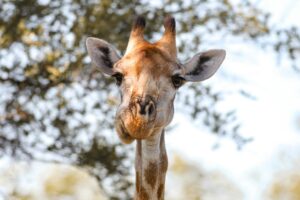Your Guide to Visiting Kruger National Park
Wildlife enthusiasts and nature lovers, to the majestic realm of Kruger National Park! Situated in the heart of South Africa, Kruger is a sanctuary teeming with an abundance of wildlife, breathtaking landscapes, and unparalleled beauty. But with its vast expanse and diverse ecosystems, choosing the best time to visit can be a daunting task. Fear not, for we’re here to guide you through the seasons and help you discover the perfect time to experience Kruger National Park in all its glory. So, grab your safari hat, pack your binoculars, and let’s embark on an adventure through the wilderness of Kruger together!
- The Magic of the Dry Season: If you’re dreaming of epic wildlife sightings against a backdrop of golden savannahs and clear blue skies, then the dry season—typically from May to September—is the ideal time to visit Kruger National Park. During this period, vegetation is sparse, and water sources become scarce, forcing animals to congregate around rivers and waterholes in search of sustenance. This concentration of wildlife makes game viewing a thrilling experience, with the chance to spot iconic species such as elephants, lions, leopards, and rhinos in their natural habitat. The cooler temperatures also make outdoor activities more enjoyable, whether you’re embarking on a game drive, guided bush walk, or sunset safari.
- The Spectacle of the Wet Season: While the dry season steals the spotlight for wildlife viewing, the wet season—typically from October to April—brings its own brand of magic to Kruger National Park. As the heavens open up and the landscape transforms into a lush green paradise, the park bursts to life with an explosion of color and activity. Migratory birds flock to the region, filling the air with their melodic calls, while newborn animals frolic in the rejuvenated vegetation. While wildlife sightings may be less predictable during this time, the dramatic thunderstorms and vibrant sunsets create a surreal atmosphere that’s bound to leave you in awe. Plus, the wet season offers the added bonus of fewer crowds and lower accommodation prices, making it an attractive option for budget-conscious travelers.
- Finding Balance in the Shoulder Seasons: For those seeking a perfect balance between wildlife sightings and comfortable weather, the shoulder seasons—April to May and September to October—offer the best of both worlds. During these transitional periods, temperatures are mild, and vegetation is still relatively sparse, making it easier to spot elusive animals while enjoying pleasant weather conditions. The park is also quieter compared to peak season, allowing for a more intimate and peaceful safari experience. Whether you’re marveling at the spectacle of the impala rutting season or witnessing the arrival of migratory birds, the shoulder seasons provide ample opportunities for memorable encounters with Kruger’s diverse flora and fauna.
As you plan your visit to Kruger National Park, consider the unique experiences offered by each season and choose the time that aligns with your preferences and interests. Whether you’re drawn to the thrill of game drives amidst the dry season’s golden landscapes, the vibrant energy of the wet season’s lush greenery, or the tranquility of the shoulder seasons’ mild temperatures, Kruger promises an unforgettable adventure that will leave you with memories to last a lifetime. So, pack your sense of wonder, open your heart to the wonders of nature, and get ready to embark on a journey through the wild wonders of Kruger National Park.
